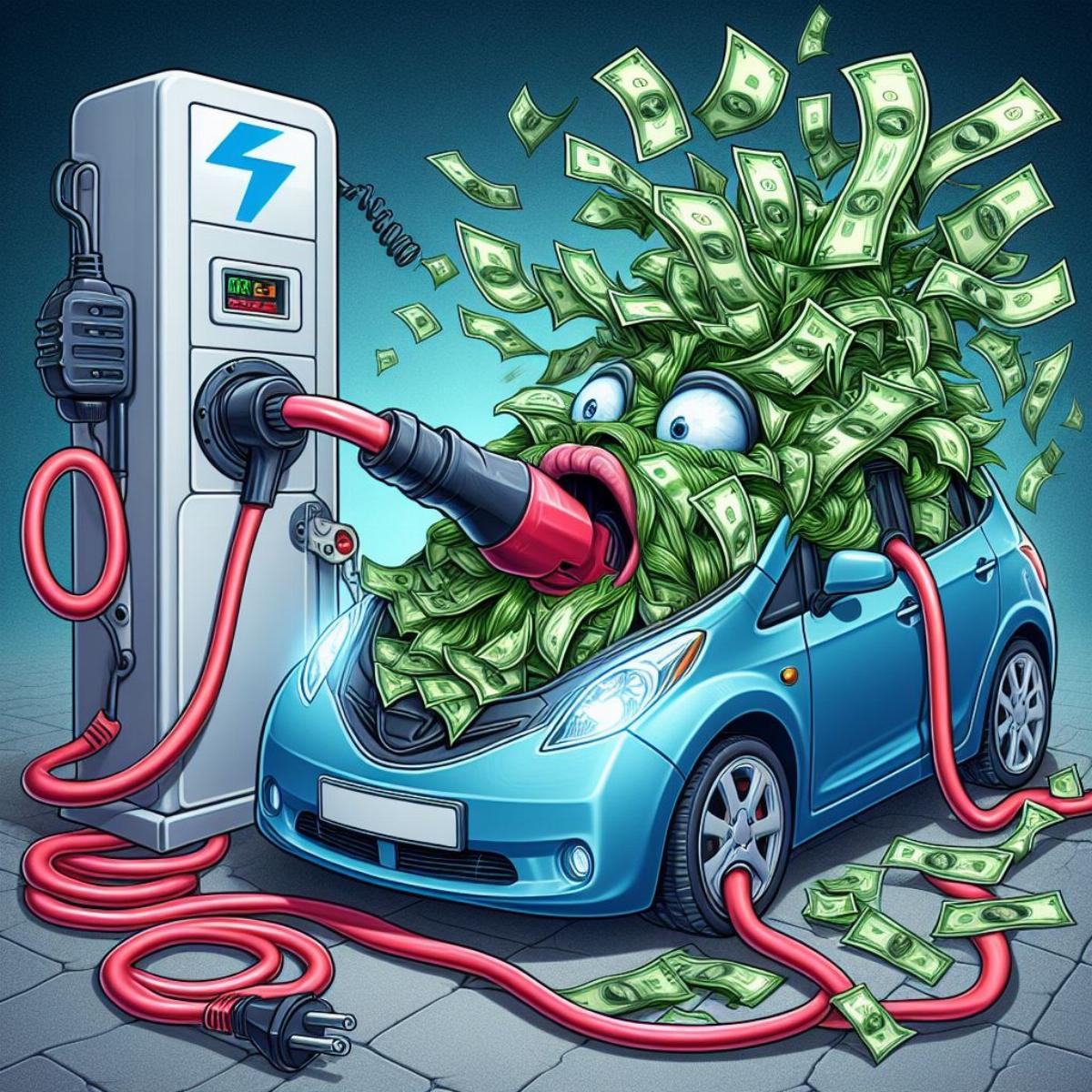Written by Christian Vezilj,
For over a decade, electric vehicles (E.V.s) have been heralded as the salvation of the planet, a technological fix to the existential threat posed by ‘fossil fuels.’
Governments poured billions into subsidies, activists sounded alarms about climate catastrophe, and states began mandating the end of internal combustion engines. Yet, despite fifteen years of incentives, the E.V. market remains fragile, dependent, and increasingly exposed.
The recent collapse in E.V. sales following the expiration of federal tax credits reveals a deeper truth: when demand is manufactured through ideology and regulation rather than consumer value, the product cannot survive without constant political oxygen.
In October 2025, E.V. sales plummeted nearly 60% from the previous month, according to J.D. Power. The drop coincided with the expiration of the $7,500 federal tax credit, a cornerstone of E.V. affordability for many buyers.

September saw a surge in purchases as consumers rushed to capture the incentive, but once it vanished, so did the demand. This dramatic shift underscores the market’s dependence on government support. Without subsidies, consumers balked at the high prices, limited range, and inconsistent charging infrastructure. The illusion of mass adoption shattered overnight.
This isn’t how transformative technologies behave. When the internet and mobile networks emerged, they too benefited from early government support—ARPANET and NSFNET for the internet, spectrum allocation and regulatory frameworks for mobile. But once private companies saw the potential, they didn’t wait for handouts.
They raised billions on the capital markets, built infrastructure at breakneck speed, and competed fiercely to win consumers. The internet and mobile phones became indispensable not because they were mandated, but because they solved real problems and created new possibilities.
Their adoption was organic, explosive, and sustained by profit, not ideology.
The E.V. market tells a different story. Despite years of subsidies, mandates, and climate-driven urgency, most automakers still struggle to make E.V.s profitable. Tesla stands as a partial exception, but even it relied heavily on government incentives, carbon credits, and regulatory tailwinds.
Other manufacturers, from Ford to GM to Hyundai, continue to lose money on E.V.s, often pricing them artificially high and then discounting them to match the tax credit. This is not a sign of market strength, it’s a sign of fragility.
Moreover, the ideological fervor that once propelled E.V.s is waning. Under the current administration, climate rhetoric has cooled. The apocalyptic warnings, “World will end in 12 years”, have faded from headlines. States that once raced to ban gas-powered cars by 2035 are now facing pushback from consumers and industry alike.
Without the moral panic, the urgency to adopt E.V.s has dissipated. Consumers are no longer buying out of guilt or virtue signaling; they’re asking hard questions about value, reliability, and practicality. And for many, the answers aren’t compelling.
E.V.s remain a niche product. They serve urban commuters, tech enthusiasts, and fleet operators well. But for rural Americans, long-distance drivers, and budget-conscious families, they’re not viable. Charging stations are sparse in many regions, battery performance suffers in cold weather, and replacement costs are daunting.
The market is telling us something: E.V.s are not a universal solution. They are a specialized tool, useful in certain contexts but not suited for mass adoption, at least not yet.
This reality should prompt a reevaluation of how we define success in innovation. A product that requires perpetual subsidy, regulatory coercion, and ideological marketing is not a market success, it’s a policy experiment. And when the policy winds shift, as they have recently, the experiment falters.
True innovation thrives when it meets real needs, delivers clear value, and earns its place in the market through competition and consumer choice.
This principle applies far beyond the E.V. industry. Across all sectors—technology, energy, agriculture, transportation, healthcare—the same rule holds: if a product needs government subsidies for extended periods and private companies are unwilling to carry it to profitability, then market forces have spoken. The product is not viable until something changes.
Whether it’s pricing, consumer demand, or technological breakthrough, the market, not ideology, must ultimately validate innovation.
When the private sector sees a genuine opportunity to satisfy consumer demand, it doesn’t wait for government help. It invests, builds, and competes. The capital markets are exceptionally good at identifying successful innovations, products, and services where tremendous profits can be made. They don’t need mandates or tax credits—they need freedom to respond to real demand.
Let the private sector produce what the public wants. Let consumers decide what works for them. Government should not be in the business of picking winners, distorting markets, or forcing adoption through fear and regulation. When innovation is real, it doesn’t need a crutch. It runs on its own.
source www.americanthinker.com
Disclaimer: We at Prepare for Change (PFC) bring you information that is not offered by the mainstream news, and therefore may seem controversial. The opinions, views, statements, and/or information we present are not necessarily promoted, endorsed, espoused, or agreed to by Prepare for Change, its leadership Council, members, those who work with PFC, or those who read its content. However, they are hopefully provocative. Please use discernment! Use logical thinking, your own intuition and your own connection with Source, Spirit and Natural Laws to help you determine what is true and what is not. By sharing information and seeding dialogue, it is our goal to raise consciousness and awareness of higher truths to free us from enslavement of the matrix in this material realm.
 EN
EN FR
FR


























